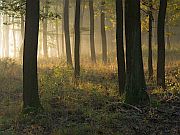
MONDAY, July 13, 2015 (HealthDay News) — A healthy 52-year-old woman who ate wild mushrooms growing in a Canadian park nearly died from her error.
Within 12 hours, she was in an emergency room with severe abdominal pain, nausea, vomiting and diarrhea. After 36 hours, she was in intensive care and on a list for a liver transplant.
Mistaking toxic mushrooms for edible ones is common and sometimes deadly, researchers warn.
“Even for experienced foragers it can be difficult to tell what is poisonous and what is not,” said Dr. Corey Stein, from the department of medicine at the University of Toronto in Canada. “People who forage need to be aware of the dangers of eating wild mushrooms.”
In the July 13 issue of the CMAJ (Canadian Medical Association Journal), Stein and colleagues tell the tale of this Asian immigrant in Canada. Her husband had experience foraging in his native country. However, they picked mushrooms he mistook for ones they had eaten safely before.
The mushrooms she ate were the toxic Amanita bisporigera species, also called “death cap” mushrooms. Mushrooms belonging to the Amanita species, which has more than 600 types, cause most deaths from mushroom poisoning, the researchers explained. However, other toxic mushrooms exist in North America.
When the patient went to the emergency room, she took the mushrooms with her, which enabled doctors to identify the toxin.
The poison, which has no antidote, attacked her liver. Without the liver transplant, she would have died.
Foraging for mushrooms is becoming increasingly popular, the study authors said. While poisonings are likely underestimated, the researchers said about 6,000 exposures to toxic mushrooms are reported each year in the United States. Most are linked with mild symptoms.
Michael Beug is chairman of the toxicology committee at the North American Mycological Association, a non-profit organization concerned with the study of fungi. The problem is lack of knowledge of toxic species, he said.
“If we can get people interested in foraging wild mushrooms to join a club and learn how to distinguish the edible species, they can forage wild mushrooms with a high degree of safety,” Beug said. His organization has 80 affiliated clubs and more than 1,500 members.
Poisoning from toxic mushrooms has three phases, Stein explained: Gastrointestinal symptoms include pain, nausea, vomiting and diarrhea, which start within six to 24 hours after ingestion. This is followed by a false recovery period when the patient appears to improve. In the final phase, which happens 48 hours after ingestion, the liver begins to fail, leading to multi-organ failure and possibly death.
Another medical expert thinks the risks of collecting and eating wild mushrooms are so great that people should avoid doing it entirely.
“Foraging for mushrooms is a dangerous practice, with even trained persons unable to always identify safe mushrooms to eat,” said Dr. Robert Glatter, an emergency physician at Lenox Hill Hospital in New York City.
“The risk of developing liver failure, potentially requiring a liver transplant — and even the possibility of death — should serve as a deterrent to avoid foraging for wild mushrooms,” Glatter said.
More information
For more on mushroom poisoning, visit the North American Mycological Association.
Copyright © 2024 HealthDay. All rights reserved.

